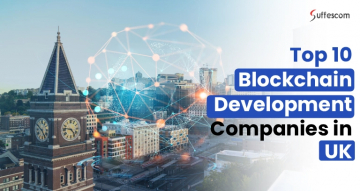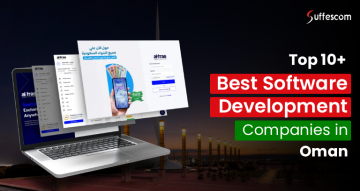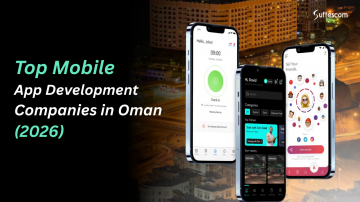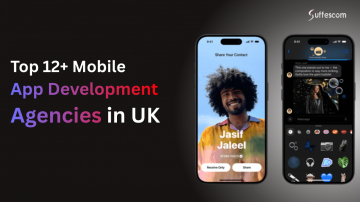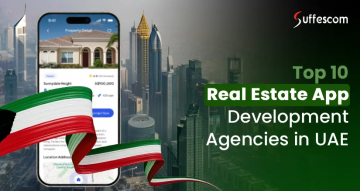How Much Does It Cost to Build MVP App Development?
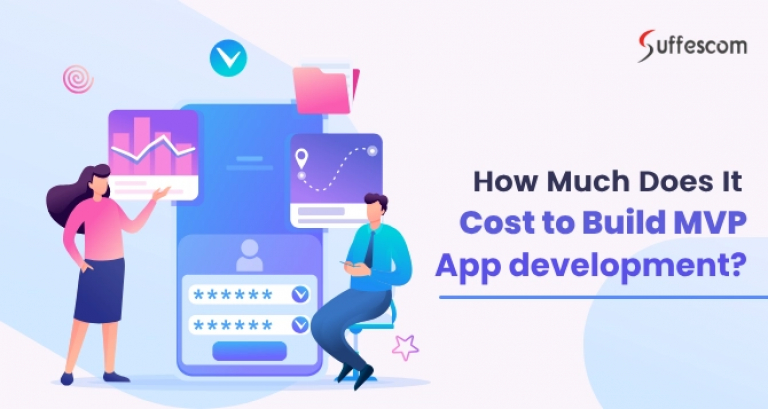
These days, creating a new app isn’t as simple as it used to be. Business owners often struggle, and yet they are sometimes stuck between big ideas and even bigger budgets. That’s how an MVP, or Minimum Viable Product, is considered. To make the idea innovative and cost-efficient in the market without investing a significant amount of time and resources.
Being an entrepreneur, it’s obvious to look for the cost estimation of MVP app development for a business, whether it’s about investment, you've landed on the right blog. In this, we will break down everything that you want to know- what is an MVP, why investing is a smart move, key factors that influence the cost, crucial tips to keep expenses in budget, etc.
Understand Minimum Viable Product (MVP)
An MVP is considered the simplest form of a product, comprising the components that is necessary to satisfy early customers' needs and validate a product idea. It enables developers to build data-driven enhancements, gather user input, and deploy quickly. MVPs help minimize risk, save money, and confirm that the product idea aligns with actual user needs and market demand.
Get a Precise MVP App Development Cost Estimation Today!
Top Business-Driven Reasons to Invest in MVP App Development
Developing an MVP first isn’t just a budget-friendly technique, it’s a smart business decision. Here are the reasons to invest in MVP app development:
1. Faster Market Entry & Competitive Advantage
Launching an MVP quickly gives an idea to users before your competitors do. It enables doing market research, identifying a clear value proposition, gathering user feedback, and improving while others are still creating their full product.
2. Minimized Financial Risk with Early Validation
Rather than investing heavily in a complete app upfront, you start small and test your idea in real market conditions. If users love it, you keep building. If not, you’ve saved yourself from a costly mistake.
3. Cost-Efficiency & ROI-Driven Development
MVP development focuses only on features that matter most. You don’t waste time or money on extras users might not even need. This targeted approach often leads to better returns on your investment.
4. Attract Early Adopters and Potential Investors
Launching an MVP helps you gather a loyal group of early users. It also makes it easier to attract investors, as you have a working product and honest user feedback to support your idea.
Key Factors That Shape Your MVP App Development Cost
The MVP app development cost estimation varies on different factors. The more features you add, the higher the cost. Let’s break down all these factors one by one to better understand where the budget goes and how to plan smartly.
1. Platform Selection
MVP app development cost depends on whether you choose Android, iOS, or Cross-platform. It directly impacts the MVP development cost. A single-platform app costs less than a cross-platform app, as it runs on multiple devices. Cross-platform frameworks such as Flutter and React Native decrease costs while reaching a larger audience.
a. Android – Developing an MVP for Android is generally cost-effective and ideal for reaching mass audiences, especially in emerging markets. However, device fragmentation may add to the testing effort.
b. iOS – iOS MVP development usually comes with a slightly higher mvp cost, but it provides access to a premium user base with higher spending capacity and smoother device compatibility.
c. Cross-platform – Choosing frameworks like Flutter or React Native allows a single codebase for both platforms, reducing MVP development cost by 30–40% while ensuring faster market entry.
2. Technology Stack and Backend Structure
Select the right tech stack and infrastructure to follow cost-effective development. Otherwise, wrongly chosen options maximize expenses and development time. Maintaining infrastructure incurs additional costs, especially considering cloud hosting services and database management.
3. Third-Party Integrations
Including external tools like payment gateways, interactive maps, chat services, or video calls, fraud prevention boosts app functionality. Instead, it increases the budget for MVP app development.
4. Design & User Experience (UI/UX)
Including a clean, intuitive, and user-friendly design in the application attracts and retains users. While a basic design is economical, adding animations, personalized layouts, and branded visuals increases the cost of the application.
5. Geographic Location of Developers
MVP app development cost estimation varies globally. For example, hiring in the US or Western Europe costs 4–5x more than outsourcing to India or Southeast Asia. Choosing the right location can help balance budget, quality, and development speed effectively
6. Regulatory Compliance and Data Security
If your MVP handles sensitive data or operates in regulated industries, such as healthcare, finance, and education, it must comply with relevant legal requirements, including the GDPR or HIPAA. It naturally boosts the MVP app development cost estimation. Security measures also require extra development work when we add additional features.
7. Team Expertise
The experience and skill set of the development team matters. On the other hand, hiring less experienced developers may look cheaper but can lead to delays, bugs, and higher expenses in the long run.
a. Experience & Skills
The skill set and expertise of developers directly influence your MVP app development cost. A highly experienced team may charge more, but they deliver robust, scalable apps quickly
b. Extended Team
In many cases, businesses strengthen their existing team by adding external experts like designers, QA engineers, or DevOps specialists. This flexible model increases the MVP cost slightly but ensures access to specialized skills, faster delivery cycles.
8. Maintenance Cost
Launching an MVP is not the end of the journey, it’s just the beginning. After release, you’ll need to maintain the app by fixing bugs, updating features, improving performance, and ensuring security compliance. Maintenance usually adds up to 15–20% of the original MVP cost per year, but it’s crucial for keeping product competitive and user-friendly.
MVP App Development Cost Estimation for Popular App Categories
Different delivery app types come with their own MVP development cost based on scalability, complexity, and market demands. Let's take a look at a breakdown:
1. Delivery App Type
From grocery to medicine to fuel delivery, the MVP cost depends on the complexity and customization needed for each app type.
a. Grocery Delivery $5,000 – $9,000
An MVP grocery delivery app generally includes user profiles, order management, a delivery scheduler, and payment options. Adding updated features such as real-time order tracking and push notifications for updates maximizes the grocery delivery app cost.
b. Fuel Delivery App $8,000 – $15,000
This includes key features such as fuel ordering and selection, location-based service availability, payment options, and delivery tracking. Adding Compliance with fuel transportation and integrating secure payment gateways impacts the final mvp app development cost.
c. Medicine Delivery App $5,000 – $10,000
A medicine delivery MVP covers prescription uploads, medication reminders, online payments, and order history and reordering. Costs increase when including functionalities such as pharmacist chat, medicine reminders, or compliance with healthcare regulations such as HIPAA and GDPR.
2. eScooter Rental Business App $5,000 – $10,000
While knowing the eScooter app development cost, consider the functionalities. It includes features like GPS tracking, booking system, ride stats, and rental management. Moreover, incorporating features like Real-time ride tracking and safety compliance raises the MVP development cost for this type.
3. Taxi Booking App $4000 – $8,000
A taxi booking MVP includes booking, driver verification, fare calculations, and ride scheduling. Advanced functionalities, such as ride scheduling and in-app chat, have a high cost, falling towards the higher end of the range.
4. Social Media App $5,000 – $15,000
Creating an MVP social media app typically starts with user profiles, content feeds, likes, and comments. Incorporate features such as in-app messaging, media sharing, and push notifications to boost the mvp cost. Apart from the integration of AI for recommendations, it also increases expenses further.
5. Mental Health MVP App $5,000 – $10,000
A basic mental wellness app MVP includes user sign-in, self-monitoring, mood tracking, appointment scheduling, and content libraries. Adding video consultations or therapist messaging services can push the cost towards the higher side.
MVP App Development Cost Estimation
There is no single answer to the question of MVP development cost. Various variables influence the final cost, including the complexity of the app, scalability, UI/UX Design, chosen technology stack, and team structure. However, for a base MVP with essential features, the cost estimation generally falls between $5,000 to $25,000. Get a precise MVP app development cost estimation to plan your budget smartly and launch your product successfully in a cost-efficient manner.
- Simple MVP: $5,000 – $10,000
- Medium Complexity MVP: $10,000 – $20,000
- Complex MVP: $20,000 – $25,000+
MVP App Development Cost For Startups
Cost Breakdown by Development Stages
The development process comprises several steps, each with its purpose and budget. Here’s the breakdown of what each stage includes
1. Discovery & Planning
At this stage, the idea starts to take shape. It includes all the Market research, competitor analysis, and technical planning. The basic goal is to build the right product for the right audience.
2. UI/UX Design
This phase involves determining the app's visual and user experience design. By creating an intuitive UI/UX make the application enjoyable. A user-friendly interface boosts engagement and reduces churn.
3. Frontend Development
In this phase, users interact with the application. Developers turn the design into a working interface, including Buttons and animations.
4. Backend Development
The development phase involves setting up servers, databases, APIs, and the logic that powers an application. A strong backend facilitates the app functionality, smooth, fast, secure, and reliable.
5. Testing & Deployment
This stage checks that everything works properly before launch. Testers check for all bugs, and performance issues. At last, Developers push the MVP to app stores or live servers.
| Development Stage | Percentage of Budget | Estimated Cost Range (USD) | What It Covers |
| Discovery & Planning | Free | $0 | Market research, competitor analysis, and technical planning. |
| UI/UX Design | 20% | $1,000 – $5,000 | Designing app visuals, layouts, user flow, and an intuitive interface. |
| Frontend Development | 30% | $1,500 – $7,500 | Building user-facing elements, screens, buttons, and animations. |
| Backend Development | 40% | $2,000 – $10,000 | Servers, APIs, databases, core app logic, security. |
| Testing & Deployment | 10% | $500 – $2,500 | Bug fixing, performance testing, and final launch to app stores/live servers. |
Hidden Expenses of MVP App Development
Understanding these hidden factors helps you avoid budget surprises and achieve accurate MVP app development cost estimation.
1. Publishing Fees for App Stores
Going live on Google Play or Apple App Store involves one-off or subscription fees ($25 for Google Play, $99/yr for Apple).
2. Third-Party Tool Subscriptions
APIs and integrations such as payment gateways, chat, maps, or analytics tend to need monthly subscriptions, which compound over time.
3. Scaling of Infrastructure
Cloud hosting, database storage, and server expenses can escalate rapidly as the app grows in users.
4. Maintenance & Updates
Bug fixes, performance enhancements, and OS compatibility updates can cost 15–20% of the original MVP development cost every year.
5. Compliance & Security Costs
Verticals such as healthcare or fintech might require additional certifications (e.g., HIPAA, GDPR), or extra security measures which costs more.
6. Marketing & User Acquisition
No matter how great the MVP is, it still requires promotion. Ad campaigns, ads, or influencer affiliation can put an additional thousand dollars into the budget.
Why Clients Trust Us: We Do Not Keep Hidden Costs
We believe in complete transparency. Our team provides upfront MVP app development cost estimation with no hidden charges or surprises.
Innovative Strategies to Reduce MVP Development Cost
Thoughtful planning and resourceful choices can trim down your MVP cost without compromising on quality. Here are proven ways developers optimize expenses during MVP development:
1. Prioritize Core Features That Deliver Maximum Impact
Focus only on the features necessary for user validation in the first version. Avoid adding nice-to-have options that unnecessarily increase both development time and costs.
2. Opt for Cross-Platform or Hybrid Development
Grab the right technologies, such as Flutter or React Native, that enable a codebase for both iOS and Android. It reduces costs by 30-40% compared to creating native apps.
3. Leverage Existing Open-Source Tools & Frameworks
By leveraging open source libraries, reusable software components, community-driven tools for standard functionalities like chat, maps, or notifications. It minimizes development time and lowers mvp price.
4. Collaborate with a Reliable MVP Development Partner
Partner with an experienced MVP-focused app development company that offers transparent pricing, cost control, and market-ready expertise to keep your MVP cost optimized.
5. Avoid Scope Creep and Maintain a Clear Roadmap
Stick to your planned feature list and avoid mid-project changes. Unplanned additions inflate the budget and delay delivery, increasing your overall MVP app development cost estimation.
6. Adopt Low-Code / No-Code Platforms
Using low code or no-code tool for MVP can lead to heavy cuts at the time of development and the cost of development. These platforms allow prototypes, testing and distribution without making everything from scratch.
7. Implement CI/CD for MVP Apps
Continuous integration and continuous deployment pipeline streamlines testing and release cycles. Automation of building and distribution reduces manual efforts, prevents errors, and MVP keeps the development costs in check.
8. Employ a Cross-Functional Agile Team
Having a small, versatile team of developers, designers and QA specialists improves the efficiency of working in agile sprints. Low submissions and rapid returns help reduce the total MVP costs.
MVP Development Cost Comparison: Freelancers vs. In-House vs. Agencies
| Model | Average MVP Development Cost | Key Advantages |
| Freelancers | $5,000 – $10,000 | - Budget-friendly option - Flexible hiring - Fast for smaller projects |
| In-House Team | $15,000 – $25,000+ | - Full control over development - Strong collaboration - Dedicated long-term resources |
| Development Agency / Industry Partner | $10,000 – $20,000 | - Access to cross-functional experts - Proven workflows & quality assurance - Reliable post-launch support |
Common Mistakes to Avoid in MVP App Development
Avoiding common mistakes saves time, avoids wasteful expenditure, and ensures that your MVP reaches its objectives. Look out for these errors:
1. Overloading Features: Loading too many features onto a product slows down launch and balloons expense. Prioritize the necessary first.
2. Ignoring User Feedback: Failing to gather or act upon feedback prevents product refinement and can damage market fit.
3. Underestimating Budget or Timeline: Inadequate planning impact development or sacrifices quality.
4. Picking the Wrong Tech Stack: Picking tools that don't scale or match your app can lead to long-term problems.
5. Overlooking Post-Launch Maintenance: Without updates, bug fixes, and feature enhancements, your first users will drop your app.
Success Tips for Building a High-Impact MVP App
Building an MVP is about strategy, smart planning, and execution. Here are practical tips for startups and business owners:
1. Focus on Main Problem: Solve a single, high-priority problem really well. Avoid adding too many features at the starting.
2. Keep Features Minimal: Include only the essentials needed for early users. Extra features increase development time and MVP cost.
3. Test Early & Collect Feedback: Launch to a small group, gather insights, and use analytics to guide improvements.
4. Choose the Right Development Partner: Collaborate with MVP-focused agencies or teams experienced in agile workflows and scalable solutions.
5. Plan for Scalability: Build your MVP on a foundation that can support future growth and additional features.
6. Iterate Quickly: Use real user feedback to refine features, fix issues, and enhance UX. Fast iteration increases market success chances.
Final Verdict!
Creating an MVP is one of the smartest, risk-free ways to test your app idea in today’s digital market. Helping to validate product idea into reality, gather feedback, decrease financial risk, and attract early investors through building a scalable product roadmap. Evaluating the cost of building an MVP for startups requires strategic planning that ensures long-term business success..
Frequently Asked Questions (FAQs)
1. How much does it cost to create an MVP?
The cost range may begin from $5,000 to $25,000. The overall cost to build an MVP depends on the project complexity, scalability, functionalities, UI/UX design, tech stacks, and the development team.
2. Why should I create an MVP?
Building an MVP helps to check the product idea on a minimal budget, identify users, grab user feedback, attract early adopters, and test the value proposition before investing in development. It naturally saves development time and upfront investment.
3. How to select the right MVP app development company?
When choosing the best MVP app development company, consider the following key factors: Look for clear goals, objectives, and timelines. Always shortlist a result-oriented development company. Check out the portfolio of the shortlisted development company to consider the expertise.
4. Is MVP development suitable for startups only?
While startups benefit the most, MVP development is also useful for enterprises testing new products or features without committing to full-scale development.
5. How can I reduce MVP development cost without compromising quality?
Strategies include prioritizing core features, opting for cross-platform or low-code development, leveraging open-source tools, and collaborating with experienced MVP development partners.
